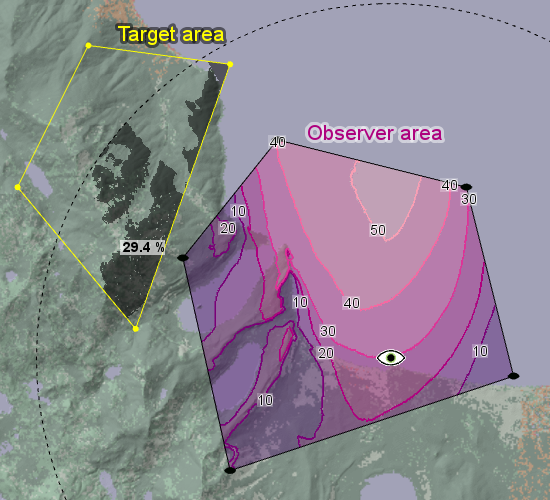VisibilityIndexOperator: from where do I see best?
Suppose we want to place an observer somewhere inside a given region. How can we determine from which position the observer would see the most of a target area?
The LineOfSightOperator does not answer this question directly. If we try to display the viewshed from each possible position at the same time, the results will overlap so much that they cannot be interpreted. We might instead attach the operator to a movable observer, and move it about in the given region until the viewshed seems to be largest. But we might bypass a good position by accident, and it is hard to estimate viewshed areas by eye and remember which one is the largest.
The VisibilityIndexOperator is designed to answer this question. It does compute an approximate viewshed from each possible position, but the area of each viewshed is converted into a percentage number, a visibility index, which can be displayed at its observer position. 100 % means that the viewshed covers the entire target. The output from the operator is a raster that contains these visibility indexes in every raster cell inside the observer area.
The screenshot below shows a typical result, where the visibility indices are displayed with isolines and a semitransparent color ramp. In addition, to illustrate the meaning of the numbers, there is a single point observer at the 30-percent isoline, and we can confirm, by eye, that the gray viewshed, which is clipped to the target area, indeed covers about 30 percent of the target area. There is also a boldface label giving the precise percentage that is covered, generated from the clipped viewshed by a custom operator. But normally, the precise percentages are not all that interesting: what is more important is the location of the maximal visibility index, and the locations of local maxima that suggest alternative observer placements.
 |
Previous: TargetLineOfSightOperator: which targets can I see?
Up: Visibility Analysis
Next: Properties of the Sensor